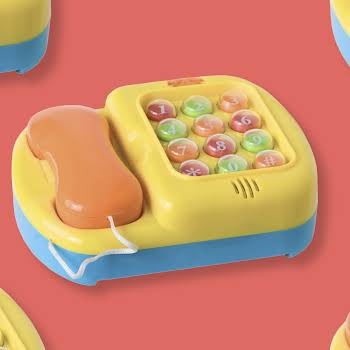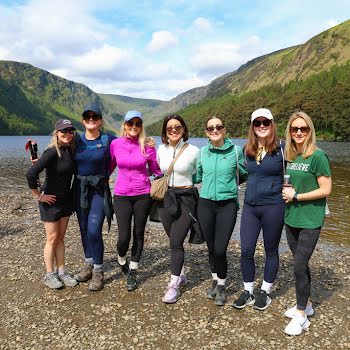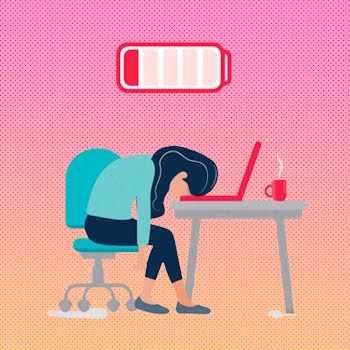
Anxiety in children: ‘Don’t underestimate what is percolating under the surface’
By Julie Meehan
18th Sep 2022
18th Sep 2022
In the fifth part of a new series, Clinical Psychologist and Parent Guide, Dr Julie Meehan explains why making sense of anxiety helps to empower both you and your child.
Strategy #5
A question I love to ask myself is, “what am I for?”
It immediately takes the focus away from the negative, which our minds often focus on when we feel anxious, to what we can do, what we want to happen. The more we focus on what we are for, the less we focus on what we are against, and we begin to re-wire the pathways in our brains and re-write our narratives about our lives and our experiences.
Advertisement
The empowerment of you and your child
So, what am I for when it comes to anxiety?
I’m for the disempowerment of anxiety.
I’m for the empowerment of you and your child so anxiety doesn’t feel so daunting, cruel, debilitating and impossible to overcome.
I’m for validating you and your child through these turbulent times, letting you know that I understand how difficult living a life with the spectre of anxiety in it is, either for you or your child, or for you both.
I’m for shouting from the rooftops to all that will listen that anxiety governs the lives of so many of us, whether we have a brain type that is considered ‘neurotypical’ (those of us who are non-autistic) or neurodivergent (those of us who are autistic, and/or live with dyslexia, dyspraxia, attentional difficulties, acquired brain changes), whether we are young or old or in-between, whether we have other mental health difficulties or have experienced trauma.
Advertisement
I’m for broadcasting the fact that it prevents us from living a life that is governed by, “yes I can do that”, “yes I understand why I can’t do that”. And that it is often completely misunderstood by those around us.
Ultimately, I’m for you re-writing the narrative around anxiety so that you and your child can be free of its grip and grow stronger and thrive.
The power of sense-making
So far, we have looked at four ways to disempower anxiety and empower you: learning to recognise the signs of anxiety, why naming anxiety tames anxiety, working with the avoidance trap and the power of really listening and attuning to what your child is saying, and what they’re not saying.
For our fifth strategy, we turn to the power of what neuropsychiatrist and author Dr Dan Siegel calls ‘Sense Making’, which basically means making sense of things.
Making sense of our difficulties has been shown to be one of the best predictors of successful psychotherapeutic outcomes. It is an exceptionally potent resource because it supports brain integration, which is when the brain is functioning at its best, with all parts of the brain working independently but communicating fluidly with each other. Like a well-functioning sports team. Robust research has shown that brain integration is the greatest predictor of overall human well-being that there is.
Advertisement
So, when it comes to anxiety, it is certainly worth a try.
How do we make sense of anxiety?
The great thing about making sense of our experiences is that you don’t need to be in psychotherapy for it to be effective. For millennia we have been making sense of our experiences through story-telling, myth weaving, creative expression, conversation and more recently, written expression. It is what we humans do.
To illustrate the point, I will use a story. In their book, The Whole Brain Child, authors Dr Dan Siegel and Dr Tine Payne Bryson use a real-life example of a two-year-old boy, Marco, who was involved in a car accident his nanny Sofia (whom he called Eea) had a seizure while driving. Marco was unharmed, but Eea had to be taken away in an ambulance. Marco’s mum was called and came to pick him up at the scene of the accident. I’m sure you can imagine how difficult this experience must have been for Marco. How was he to make sense of the accident and his beloved nanny disappearing, especially when his language was only in its developing stages? Fortunately, his mum knew about Sense Making and when they arrived home and got settled, she took out two puppets, Eea and Marco, and re-enacted the whole event for him in a way he could understand, including the outcome: that Eea was feeling well and was in the hospital for some rest, which was indeed the case. She even included Marco and her going to visit Eea, which they did the next day.
Marco’s mum subsequently reported to the authors that Marco never showed any signs of anxiety, and what could have possibly been a traumatic experience for him had no long-lasting negative consequences. That’s because Marco had been supported to make sense of his experience and work it all out in a way that facilitated his understanding.
My re-telling of Marco and Eea’s story is a case in point: sometimes it is so much easier to really ‘get the message’ when we convey the message through a story. We remember it, it takes on its own life. It makes sense.
Advertisement
The receptive brain
Story-telling, role-play, painting pictures, creating cartoon strips, stop-motion films, creative writing, journalling and watching films and plays are all powerful methods of sense-making that are non-directive and non-threatening.
Non-directive and non-threatening are key words here for many children and teenagers because they are not being asked to talk directly about their experiences, which may feel overwhelming and unsafe. Giving them an opportunity to process their experiences through immersion in books and creative expression gives them the time and latitude they may need to work something out in their own way. It allows them to feel safer and more comfortable.
And when we feel safe, our brains are more receptive – we take in more information and at a deeper level. We get it. It sticks. It creates change.
Give it a go
Get creative: Depending on the age of your child, getting stuck into a bit of role-play with them – just like Marco’s mum – can be very effective. If this feels unnatural to you, you could try getting out the paintbrush and paints, and creatively expressing an experience with your child (FYI, stick-people have served me well, just sayin’). For older children and teenagers, getting creative with cartoon strips, script-writing, playwriting, stop-motion or short filmmaking can help them to explore difficult themes in a creative and therapeutic way.
Advertisement
Be personal: If none of the above seems to apply to you and your sensibilities, or even if they do, speaking about your own experiences of anxiety, or those of someone you know, even a famous person who has spoken about how they coped with it can be immensely powerful for a young person to hear. Remember, often children think that they are the only ones experiencing whatever it is they are experiencing, and the words to express how they feel, even if they felt comfortable to do so, may be lacking. So, providing them with information that everyone feels this, and moreover, we can move through it can create subtle but effective change for them can really land with them. Make sure you convey anything personal in an appropriate and boundaried way, so they don’t ‘take on’ your anxious experience too.
Journal: Journalling is a great way to help us to make sense of our days, our relationships and our internal experiences. You can encourage your child to journal (but please don’t read them!), or model this behaviour by journalling yourself.
Books: there are thousands of books out there that tackle the subject of anxiety for children and young people of all ages. Some do so with great insight and skill, others less so. Flick through books suitable for your child’s age in the book shop, ask your librarian and others in your community (such as other parents or teachers) for recommendations. Read book reviews, see what fits. Ask your child to review some books, see what they like.
Films: Parents often tell me how helpful the film Inside Out has been in helping their children make sense of difficult experiences. Now we know the reason why. Watching films like this with your child and chatting about them in a casual but reflective way afterwards – if your child is up for that – can weave the subtle yet powerful effect of supporting your child to understand that their difficulties are personal, yet universal, and there are ways to overcome them, even if it takes time to get there.
Subtle is powerful
Sense-making is often a subtle approach to disempowering anxiety: it can take time, but don’t underestimate what is percolating under the surface. Like each of the five strategies we have covered so far, sense-making often works most effectively in tandem with other approaches, as they share similar components. But all the while, remember that you are slowly building a case for your empowerment and your child’s empowerment, as the grip of anxiety begins to loosen.
Advertisement
As you both re-write the story of your own well-being, remember to ask yourself, ‘what am I for?’.

© Julie Meehan, 2022
Dr Julie Meehan is a Clinical Psychologist, Parent Guide and (Imperfect) Parent.
Advertisement
Dr Julie has developed an evidence-based, step-by-step pathway for parents to follow that guides you to create more connected and trusting relationships with yourself and your child, allowing you both to meet and grow from life’s challenges, and to thrive.
You can follow The Pathway Home for Parents through Online Self-study Courses, Live Programmes and through Dr Julie’s One to One Parent Guidance Packages on www.juliemeehan.com
Follow Dr Julie on:
Instagram: @drjuliemeehan
Facebook: Dr Julie Meehan






















